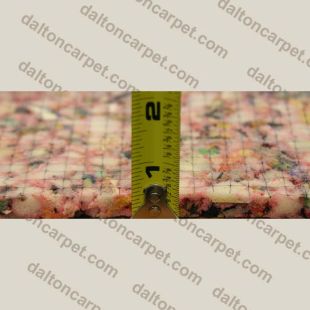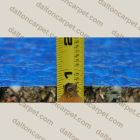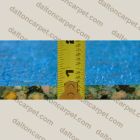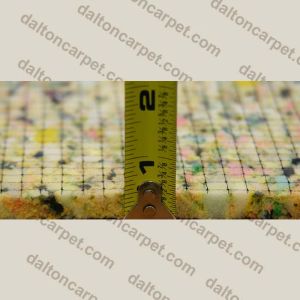We have a new load of Overstock Carpet specials - Click Here
2214 Pad 7/16 6lb Closeout Durabond
In stock
SKU
2214
While supplies last you can purchase this cushion at the promotional pricing. Must purchase carpet and pad to qualify for this price. Please mention SAVENOW. Internet pricing only. The main purpose of a carpet pad is to protect your carpet. The pad keeps the underside of your carpet from wearing against the bare floor. It also absorbs the impact from footsteps and furniture, lessening the stress on the carpet. Installing the wrong pad can sometimes void your carpet's warranty, so always look at the carpet manufacturer's recommendations. If you're replacing carpet, don't be tempted to save by using the existing pad. It almost always needs to be replaced. Regardless of any other traits, density -- or how much weight it has for a given thickness -- is the key to a carpet pad's usefulness. If your padding isn't dense enough, it won't adequately protect your carpet -- if the pad can be completely compressed, your carpet absorbs wear with each impact. In fact, a carpet pad's density is rated according to the force needed to compress it in this way. The most common pad referred to as rebond, begins at at 3lb density up to a 9 lb +, the higher the number the higher the density and firmer the pad.
A 6 or an 8 is preferred for most residential cut pile and textured carpets. A bonded pad is versatile and can be a good choice for most situations, as long as you avoid padding that's too thick. Seven-sixteenths of an inch is the most common. In part, this is because a thick pad allows too much up-and-down movement of the carpet, wearing the backing as it flexes. Also, a pad that's too thick can allow the carpet to pull away from the tack strip that holds it flush with the wall. Rubber pad has long been considered a premium carpet pad. The pads are solid and heavy in weight, so they aren't as soft as some pads. Some do not prefer the “stiff” feel. But they are long-lasting and give the carpet good support. They also are more expensive. Synthetic pad is the oldest type of carpet cushion. Not generally used for residential, but they can be ideal in certain situations. In homes today, they are mainly laid down under area rugs to prevent their movement. They're more common in commercial applications to provide a very firm foot feel under carpets. When choosing your pad, ask us which pad is recommended for the specific carpet you have chosen. We will be glad to give you options for the best performance and longevity.
Colors of pad may vary from lots, but does not affect quality.
$0.33 sq. ft. ($2.97 sq. yd.)
While supplies last you can purchase this cushion at the promotional pricing. Must purchase carpet and pad to qualify for this price. Please mention SAVENOW. Internet pricing only.
The main purpose of a carpet pad is to protect your carpet. The pad keeps the underside of your carpet from wearing against the bare floor. It also absorbs the impact from footsteps and furniture, lessening the stress on the carpet.
Installing the wrong pad can sometimes void your carpet's warranty, so always look at the carpet manufacturer's recommendations. If you're replacing carpet, don't be tempted to save by using the existing pad. It almost always needs to be replaced.
Regardless of any other traits, density -- or how much weight it has for a given thickness -- is the key to a carpet pad's usefulness. If your padding isn't dense enough, it won't adequately protect your carpet -- if the pad can be completely compressed, your carpet absorbs wear with each impact. In fact, a carpet pad's density is rated according to the force needed to compress it in this way. The most common pad referred to as rebond, begins at at 3lb density up to a 9 lb +, the higher the number the higher the density and firmer the pad. A 6 or an 8 is preferred for most residential cut pile and textured carpets.
A bonded pad is versatile and can be a good choice for most situations, as long as you avoid padding that's too thick. Seven-sixteenths of an inch is the most common. In part, this is because a thick pad allows too much up-and-down movement of the carpet, wearing the backing as it flexes. Also, a pad that's too thick can allow the carpet to pull away from the tack strip that holds it flush with the wall.
Rubber pad has long been considered a premium carpet pad. The pads are solid and heavy in weight, so they aren't as soft as some pads. Some do not prefer the “stiff” feel. But they are long-lasting and give the carpet good support. They also are more expensive.
Synthetic pad is the oldest type of carpet cushion. Not generally used for residential, but they can be ideal in certain situations. In homes today, they are mainly laid down under area rugs to prevent their movement. They're more common in commercial applications to provide a very firm foot feel under carpets.
When choosing your pad, ask us which pad is recommended for the specific carpet you have chosen. We will be glad to give you options for the best performance and longevity.
Colors of pad may vary from lots, but does not affect quality.
| Price | $0.33 |
|---|---|
| Style Number | 2214 |
| Style Name | Pad 7/16 6lb Closeout Durabond |
| Rating | 4.5 |
| Pad Category | Durabond |
| Thickness | 7/16" |
| Density | 6lb |
| Roll Size | 30 sq. yds. |
| Features | Durabond |
| Pad Application | Residential Carpet |
Customers who shopped this product also shopped



